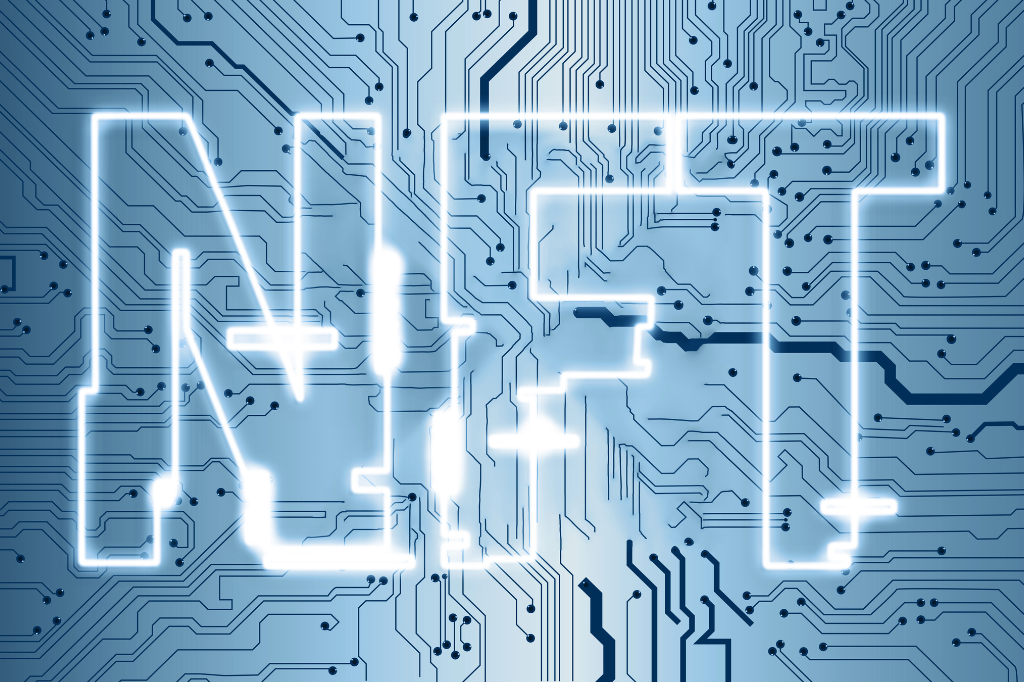A non-Fungible Token (NFT) is a type of digital asset that represents ownership rights over something unique, physical, or intangible. NFTs are often associated with collectibles, games, real estate, and art. However, they have their own unique features.
Unlike fungible tokens, which represent ownership rights over a specific quantity of a good or service, NFTs represent ownership rights over unique items.
For example, if I own a piece of art, it’s not fungible. If someone else owns the same piece of art, then we both own the same thing. However, if I own a painting by Vincent van Gogh, it’s different than owning a painting by Pablo Picasso. Because it’s unique, it’s non-fungible.
In the case of cryptocurrencies, NFTs are tokens that represent ownership rights over unique assets, such as real estate, virtual goods, collectibles, and even crypto assets.
History of NFT
The concept of NFT was first introduced in 2016 by Charles Hoskinson, who later founded IOHK (Input Output Hong Kong), a blockchain company focused on developing Cardano. In 2017, Ethereum co-founder Vitalik Buterin described NFT as “the future of crypto”.
In 2018, EOS launched its own version of NFT called ERC-1155. Since then, many projects have been created using NFT technology.
Creation of 1st NFT
The first NFT was created by CryptoKitties, a blockchain game where users could breed and trade cats. In order to play the game, players had to purchase rare digital kittens using ether, the cryptocurrency associated with Ethereum. Once purchased, these kitties were given a unique code that allowed them to be traded online. Each kitten represented a unique digital asset.
CryptoKitties was the first major application of NFTs, but many other projects have since emerged. One of the most popular applications of NFTs is Augur, a prediction market platform built on top of the Ethereum network. Users can create markets for any event imaginable, including predicting the winner of the 2020 presidential election. These markets are represented by ERC20 tokens.
ERC20 stands for “Ethereum Request for Comment 20. It’s a standard protocol for representing smart contracts on the Ethereum network. All ERC20 tokens are fungible, meaning that they can be exchanged for each other at no cost. But some ERC20 tokens are non-fungible, meaning that they cannot be easily replaced.
One of the most well-known examples of a non-fungible ERC20 token is CryptoKitties. When a user purchases a CryptoKitty, he receives a unique code that identifies his cat. That code is what gives him ownership rights over his cat. Other users can only buy cats that share the same unique identifier.
What Makes NFTs Special?
NFTs are unique tokens that represent ownership rights over something unique, rather than fungible assets. Fungible assets are assets that can be exchanged without any restrictions. Examples of fungible assets include dollars, gold, and bitcoin. On the contrary, NFTs are not interchangeable. An NFT cannot be replaced for anything else. An NFT represents ownership rights over something that cannot be easily replaced.
How Does NFT work?
An NFT is created using smart contracts on the blockchain. Once the contract is set up, anyone who owns the NFT can transfer their ownership to someone else. When the owner transfers ownership, the new owner receives the NFT’s unique identifier. The new owner can then use the NFT’S unique identifier to access the underlying item.
What are Some Examples of NFTs?
There are many types of NFTs. One example is a collectible card game. In this case, the NFT would represent a virtual card. Another example is a piece of art. In this case, an artist could create an NFT that represents his/her artwork. A third example is a rare baseball card. In this case, a collector could own an NFT that represents a specific baseball card.
What are Some Advantages of NFTs?
The biggest advantage of NFTs is that they are extremely secure. Because NFTs are not fungible, they cannot be counterfeited or stolen. Also, since NFTs are not easily replaceable, they are much less likely to be lost or damaged. Finally, NFTs are much easier to track than fungible assets. If you lose an NFT, you can contact the person who owns the NFT and ask them to send you a replacement.
The Future of NFT
The use cases of NFTs are endless and they have been gaining attention recently. Here are some examples of how NFTs could be used in the near future:
Physical Products
Physical goods are tracked using barcodes, RFID tags, and serial numbers. However, these methods are prone to errors and fraud. NFTs provide a much safer way to track ownership of physical goods. And this thing creates a valid reason to use NFT for physical products.
Real Estate
Real estate is traditionally tracked using deeds and contracts. However, these documents are often hard to access and understand. NFTs allow for easier tracking of property ownership.
Artwork
Artists create artwork using various materials including canvas, paper, wood, etc. Artists often sell their work directly to consumers. Unfortunately, artists do not always get paid for their work. Using NFTs, artists can receive compensation for their artworks without relying on third parties.
Entertainment
Entertainment companies produce movies, video games, music, and books. Consumers purchase these products to enjoy them at home. Unfortunately, many entertainment companies do not pay artists for their work. Using blockchain technology, artists can receive compensation directly from consumers.
Moreover, the movie industry is testing out NFTs to help promote movies. Movie studios are releasing special editions of films that are tied to specific NFTs. These NFTs can be bought and sold online, but they aren’t necessarily fungible.
Education
Education providers offer courses online to students around the globe. Students enroll in classes and pay tuition fees. Unfortunately, education providers do not always give back to students for their time and money. Using NFTs allows educators to compensate students for their efforts.
Healthcare
Healthcare providers deliver healthcare services to patients. Patients pay for these services out of pocket. Unfortunately, healthcare providers do not always pay doctors for their services. Using NFTs helps ensure that healthcare providers pay for patient care.
Best For Invention
Other companies are exploring how NFTs can be applied to other industries. For example, NFTs could be used to track intellectual property. A company might issue a patent for a new invention and give each inventor a unique NFT. The NFT would represent ownership rights over the patent.
This idea of tracking IP is being explored by the US Patent Office. The agency recently announced plans to test out a system that would allow inventors to register their patents with the government. The agency hopes that this system will make it easier for people to find patents and protect their inventions.




